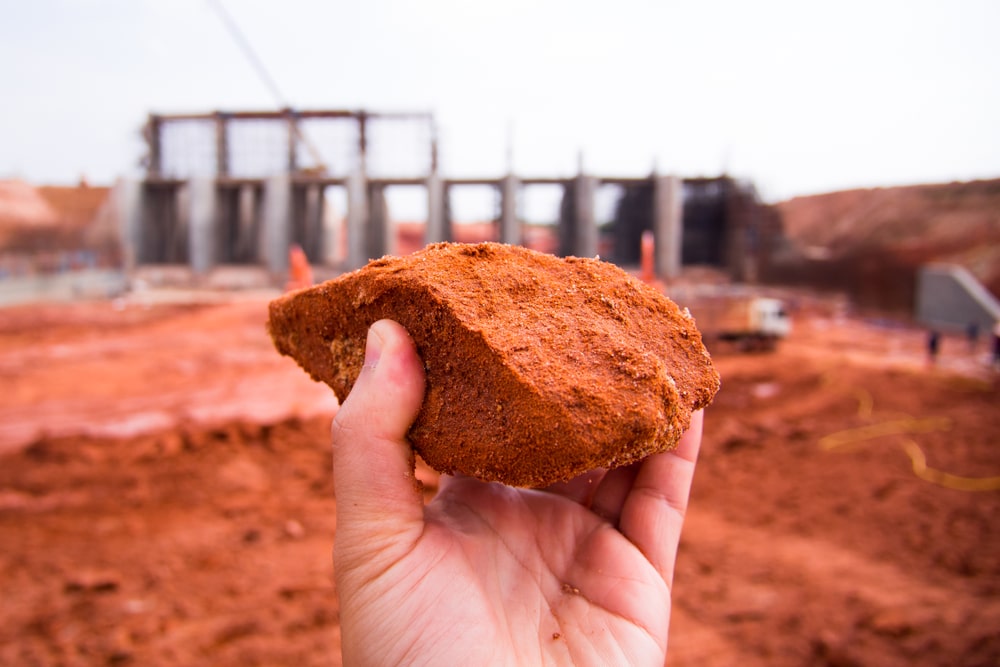Expert Consulting Engineer Providers for Ingenious Infrastructure Solutions
Wiki Article
The Value of Dirt Evaluation and Site Investigation in the Geotechnical Market: Ensuring Safety And Security and Stability in Civil Design
In the geotechnical market, dirt evaluation and website investigation are foundational aspects that underpin the safety and security and security of civil design tasks. By extensively comprehending soil properties, engineers can preemptively resolve possible difficulties, eventually safeguarding structural stability.Comprehending Soil Characteristics
In the world of geotechnical engineering, a comprehensive understanding of soil homes is paramount for educated decision-making and effective task layout. The characterization of dirt includes the evaluation of various physical and mechanical residential or commercial properties, such as grain size circulation, plasticity, shear, cohesion, and permeability strength. These residential or commercial properties determine how dirt behaves under different loading problems and environmental influences, making them vital for assessing site suitability for building and construction jobs.Dirt classification systems, such as the Unified Dirt Classification System (USCS) and the AASHTO classification, provide structures for organizing soils based on their characteristics. This category aids engineers in forecasting habits under anxiety, water flow, and negotiation, consequently affecting layout options and building and construction strategies.
In addition, the communication in between soil and bordering structures is a crucial factor to consider in geotechnical engineering. Recognizing dirt homes assists recognize potential obstacles, such as liquefaction in earthquake-prone locations or too much negotiation in soft dirts. By extensively evaluating these residential properties, geotechnical designers can make certain the security, stability, and longevity of frameworks, inevitably adding to the overall resilience of civil engineering projects.
Methods of Soil Analysis

In-situ examinations consist of techniques such as Typical Penetration Tests (SPT), Cone Penetration Tests (CPT), and vane shear tests. SPT assesses the resistance of dirt to infiltration, giving information on density and stamina, while CPT gauges dirt resistance and pore stress, producing continuous profiles of soil stratigraphy. Vane shear examinations are specifically beneficial for analyzing the shear stamina of cohesive soils.
Lab examinations enhance these in-situ assessments and include tasting soil for controlled screening. Usual laboratory approaches consist of Atterberg limits, which establish the plasticity characteristics of fine-grained soils, and compaction examinations, which examine moisture-density partnerships. Extra examinations, such as triaxial compression and unconfined compression tests, are performed to review the shear stamina of dirt samples under various conditions.
Duty of Website Examination
Website investigation plays a pivotal function in the geotechnical engineering process, functioning as the foundation for recognizing subsurface conditions. This detailed assessment entails methodical exploration of soil and rock residential properties, groundwater levels, and various other geological attributes that affect job security and stability.Typically, website examinations incorporate a variety of strategies, consisting of drilling boreholes, tasting, and in-situ testing. These approaches offer important data on the physical and mechanical qualities of the ground, educating designers regarding possible challenges such as soil settlement, birthing capacity, and incline security.
Additionally, website examination promotes the recognition of unsafe products and pollutants, enabling the execution of ideal remediation procedures. By establishing an exact subsurface account, site investigations help to minimize dangers related to building and construction, guaranteeing that tasks comply with security standards and laws.
The searchings for from a detailed site investigation not just overview design decisions but additionally influence construction methods and timelines. In summary, the significance of site investigation can not be overemphasized; it is an essential step in the geotechnical engineering process, preparing for effective job execution while prioritizing public safety and environmental honesty.
Impact on Task Style
An extensive understanding of soil qualities substantially affects project layout in the geotechnical market. Soil evaluation informs designers regarding the mechanical buildings, composition, and habits of the ground, which are essential factors in figuring out the usefulness and safety and security of a building project. Accurate information on dirt toughness, compressibility, and permeability enable the development of efficient foundation designs, guaranteeing that frameworks are sufficiently sustained and stable throughout their lifespan.Moreover, the presence of contaminants or unstable soil layers can motivate alterations in project layout, such as picking alternate building and construction approaches or products. This aggressive method reduces dangers associated with soil negotiation, extreme loading, or engineer of record lateral motion, therefore securing both the honesty of the framework and public safety and security.
The combination of soil analysis right into job layout likewise promotes compliance with regulatory requirements and ecological considerations. By resolving soil-related difficulties early in the style process, designers can maximize source allocation and reduce possible delays and costs associated with unanticipated website conditions. Inevitably, detailed dirt evaluation improves the total quality and sturdiness of civil engineering jobs, bring about more lasting and durable framework.
Case Studies and Instances
Showing the essential duty of dirt analysis in the geotechnical market, various instance researches highlight its effect on project end results. One noteworthy instance is the construction of a skyscraper in midtown Los Angeles, where extensive dirt screening disclosed unsteady subsurface conditions. consulting engineer. By determining the presence of extensive clay, designers were able to upgrade the structure, incorporating deep pilings that ensured stability and safety, ultimately preventing potential structural failings
Lastly, a dam project in the Southeast dealt with delays because of unexpected soil erosion issues. In-depth dirt evaluation allowed designers to execute effective stabilization strategies, making certain that the dam satisfied security policies while sticking to the job timeline. These cases underscore the need of extensive dirt analysis and site examination, highlighting their necessary role in attaining successful and risk-free civil design jobs.
Final Thought
Finally, soil evaluation and site examination are basic elements of the geotechnical market, playing an essential duty in guaranteeing the safety and stability of civil design jobs. By giving crucial data on soil residential or commercial properties and subsurface problems, these procedures educate structure style and construction methodologies. Furthermore, thorough investigations add to threat identification and risk reduction, eventually boosting the longevity and longevity of frameworks while optimizing source allocation throughout the task lifecycle.In the geotechnical industry, soil evaluation and website examination are fundamental elements that underpin the safety and security and security of civil design tasks. Understanding dirt properties helps determine prospective challenges, such as liquefaction in earthquake-prone areas or excessive settlement in soft soils. SPT examines the resistance of dirt to infiltration, providing data on density and toughness, while CPT gauges soil resistance and pore pressure, producing continual profiles of soil stratigraphy. These instances underscore the necessity of comprehensive soil analysis and site investigation, highlighting their crucial role in accomplishing effective and safe civil design tasks.
In final thought, soil evaluation and website investigation are basic elements of the geotechnical sector, playing an important role in ensuring the security and security of civil design projects.
Report this wiki page